- Home
- James Luceno
Tarkin Page 3
Tarkin Read online
Page 3
Tarkin had lost count of how many back-and-forth meanders he had completed, and was standing opposite the vulture droid when a decontamination lock in the partition opened and a tech emerged, removing the hood of his anti-rad suit and wiping sweat from his face and balding pate with a bare hand.
Tarkin spun around to meet him halfway. “What have you learned?”
“Not as much as we’d hoped to, sir,” the tech said. “Analysis of data received by the command center’s friend-or-foe indicator confirms that the capital ship is a downsized version of a Separatist Providence-class cruiser-carrier, modified with modules taken from CIS frigates and destroyers. Ships of the sort made a name for themselves during the war by jamming signals and destroying HoloNet relays. Parts of the ship’s sensor array tower, which the Seps usually mounted aft rather than forward, appear to have come from the cruiser Lucid Voice, which saw action at Quell, Ryloth, and in a couple of other contested systems.”
Tarkin frowned. “How did the appropriation teams manage to miss confiscating that ship?”
“They didn’t, sir. Records show that the Lucid Voice was dismantled at the Bilbringi shipyards four years ago.”
Tarkin considered that. “In other words, some components of that vessel went missing.”
“Lost, stolen, sold, it’s impossible to say. Other sections of the warship appear to have come from the Invincible.”
Tarkin didn’t bother to mask his surprise. “That was Separatist Admiral Trench’s ship—destroyed during the Battle of Christophsis.”
“Partially destroyed, in any case. The ship was modular in design, and the modules that survived must have been worth salvaging and putting on the open market. Parts dealers in the Outer Rim are desperate for supplies, so the modules may have ended up in the Tion Cluster or the like.” The tech removed his other elbow-length glove and wiped his face again. “The Idellian scanner isolated thirty lifeforms—a crew of humans and near-humans—which is in keeping with the practice of placing sentients in command of most Providence-class ships. But for a ship of that size and armament, thirty sentients is virtually your definition of a skeleton crew. Sometimes the Seps substituted OOM pilot battle droids, and I’m guessing our skittish warship had some of those as well, because whoever cobbled the thing together retrofitted it with a rudimentary droid-control computer—possibly a redundant comp of the sort you used to find on first-generation Trade Federation Lucrehulks.”
“Whoever, as you say.”
“Lucid Voice was built by the Quarren Free Dac Volunteers Engineering Corps—much to the displeasure of the Mon Cals who share their planet with the Quarren. We’re checking to see if QFD or their erstwhile partners, Pammant Docks, might have supervised the reassembly. TradeFed and Separatist technology has been showing up lately in the Corporate Sector, so we’re also looking into the possibility that the ship was built there. The Headhunter starfighters seen in the holovid could have come from anywhere. Tikiars are produced in the Senex, but it’s not uncommon to encounter them in this sector of the Rim.”
Tarkin nodded and motioned toward the hangar. “The droids?”
The specialist turned to face the viewports. “Relatively few modifications to the vulture. Same fuel slug propulsion, same weapons system. Alphanumeric identification indicates that this one belonged to a Confederacy battle group known as The Grievous Legion.”
“And also managed to find its way onto the black market …”
“So it appears, sir.”
Tarkin moved farther down the partition. “And the tri-fighters?”
“Unremarkable. But we’ve no evidence regarding their origin. Not yet anyway.”
Tarkin forced an exhalation through his nose. “Were you able to retrieve data regarding the warship’s point of origin?”
The specialist shook his head. “Negative, sir. The memory modules of the droids don’t log jump information.”
“All right,” Tarkin said after a moment. “Continue with the analysis. I want every weld and rivet investigated.”
“We’re on top of it, sir.” The tech pulled the hood back over his head, slipped his hands into the long gloves, and disappeared through the lock.
Tarkin watched him enter the hangar, then resumed pacing, replaying the attack in his mind.
Harassment of Imperial installations by pirates and malcontents was nothing new, but in almost all cases the assaults had been hit-and-run sorties, and none had taken place so close to heavily defended Geonosis. The counterfeit real-time holotransmission had been designed to draw ships from Sentinel to Rampart Station, in the hope of leaving the former vulnerable. But the attack was clearly calculated to be suicidal from its inception. Even if he had dispatched the Electrum to the marshaling station—even if he had been taken in by the distress call and dispatched half his flotilla—the energy shields and laser cannons that protected Sentinel would have been sufficient to ward off any strikes, let alone from droids. The warship seen in the holovid the attackers had transmitted through the local HoloNet relay had shown up at Sentinel, but where were the modified starfighters, which had to have been flown by living pilots? Despite being crewed by sentients, the mysterious cruiser hadn’t discharged any of its point-defense or ranged weapons. If destruction of the base was the goal, why hadn’t whoever was behind the attack used the ship as a bomb by reverting from hyperspace in closer proximity to the moon? Planetary bodies larger than Sentinel had been shaken to their core by such events.
Equally worrisome was the question of how the counterfeiters had known about Lieutenant Thon, whose recent posting to Rampart should have been top secret. The creators of the false holovid had been able to improvise by transmitting a real-time hologram of the young officer in response to Tarkin’s order that he show himself. Was Thon involved in the conspiracy, or had the attackers merely doctored existing footage of him, lifted perhaps from the public HoloNet or some other source?
As troubling as it was to accept that the locations of Sentinel and Rampart bases had been compromised, he still couldn’t make sense of the attack itself. What would pirates or privateers stand to gain by launching an ill-fated drone attack? What, for that matter, would political dissidents stand to gain?
Was it a case of vengeance?
One group fit the bill: the Droid Gotra, a lethal band of repurposed battle droids with what some considered legitimate grievances against the Empire for having been abandoned after their service during the Clone Wars. But recent intelligence reports stated that the Droid Gotra was still confined to an industrial complex in the bowels of Coruscant, serving as muscle for the Crymorah crime syndicate in robberies, protection, kidnapping, illegal salvage, and extortion. It was possible that the Gotra was branching out—it was even possible that the group had learned about Sentinel Base—but it was unlikely that the droids would make use of obsolete weapons to send a message to the Empire.
Tarkin shook his head in aggravation. In part, the deep-space mobile battle station was meant to put an end to harassments of any sort, whether driven by greed, political dissent, or revenge for acts committed during the Clone Wars or since. Once everyone in the galaxy grasped the weapon’s capabilities, once the fear of Imperial reprisal took hold, discontent would cease to be a problem. But just now—and notwithstanding the covert nature of the Geonosis project—the Imperial Security Bureau and Naval Intelligence were continually trying to quash rumors and prevent information leaks. In the three years Tarkin had been commanding Sentinel and hundreds of nearby supply and sentry outposts, as well as administering a vast slice of the Outer Rim, no group had been successful in penetrating Geonosis space.
The chance that that could change shook him to the core.
If establishing the identity of Sentinel’s enemies was already proving daunting, getting to the truth of the battle station’s origin was nearly impossible. Everyone from celebrated ship designers to gifted engineers wanted to take credit for the superweapon. Tarkin himself had discussed the need for such a weapon with
the Emperor long before the end of the Clone Wars. But no one outside the Emperor knew the full history of the moonlet-sized project. Some claimed that it had begun as a Separatist weapon designed by Geonosian Archduke Poggle the Lesser’s hive colony for Count Dooku and the Confederacy of Independent Systems. But if that was the case, the plans had to have somehow fallen into Republic hands before the Clone Wars ended, because the weapon’s spherical shell and laser-focusing dish were already in the works by the time Tarkin first set eyes on it following his promotion to the rank of Moff—escorted to Geonosis in utmost secrecy by the Emperor himself.
All the same, he had no compelling reason to solve the enigma of the battle station’s beginnings. What bothered him was that, compliant with a strategy that no base commander—Moff, admiral, or general—should have unrestricted access to information regarding shipments, scheduling, or construction progress, no single person was in charge of the project, unless of course the Emperor was considered to be that person. But the Emperor’s visits had been few and far between, and it was anyone’s guess just how much information was getting past the Imperial Ruling Council the Moffs and others answered to and actually reaching the Emperor’s ear. Certainly he was being briefed, but briefings were no longer enough. The project had reached a point where it had to rely on countless suppliers; and though each was being kept in the dark regarding the final destination of their contributions, millions of beings, perhaps tens of millions of beings galaxywide, were now involved with the battle station in one capacity or another. Yes, the project required the on-site presence of a think tank of scientists, weapons specialists, and habitat architects, but what did any of them know about protecting the station from saboteurs?
If Tarkin had his way, and at this point it was uncertain he ever would, he would adopt the hegemonic arrangement that was in place on Coruscant and elsewhere, and appoint an overseer to coordinate all construction and defense considerations. A single overseer to whom others would answer—or be damned if they didn’t.
If whoever was responsible for the dubious attack on Sentinel was simply hoping to get his attention, then that part of the plan had succeeded, for in the end he was left with more questions than answers.
His restless pacing subsided as his adjutant hurried into the maintenance hangar’s safe area.
“A communiqué from Coruscant, sir.”
Tarkin assumed that it was Military Intelligence, responding to the after-action report he had filed, and said as much.
“No, sir. Higher up the chain of command.”
Tarkin arched an eyebrow. “How high?”
“Nosebleed altitude, sir.”
Tarkin stiffened slightly. “Then I’ll take the transmission in my quarters.”
Where Tarkin’s own uniformed holopresence had stood two days earlier, the holotable now projected a towering apparition of Vizier Mas Amedda, swathed in rich maroon robes, the cyan tint of the holofield darkening the Chagrian’s natural blue pigmentation. From bulging extrusions of flesh on either side of Amedda’s thick neck dangled tapered horns that matched the pair crowning his hairless cranium.
“We trust all is well at Sentinel Base, Governor.”
Tarkin couldn’t be certain if or how much Amedda knew about the recent attack. On Coruscant information was closely guarded, if only as a means of maintaining one’s cachet, and even the head of the Ruling Council might not have been made privy to details known to Military Intelligence and the Admiralty.
“Rest assured, Vizier,” Tarkin said.
“No surprises, then?”
“Only the expected ones.”
The ambitious amphibian vouchsafed a tight-lipped smile at his end of the duplex holocomm. Obstructive and fault finding during his years as vice chancellor of the Republic Senate, he had become one of the Emperor’s most valued advisers, as well as the Empire’s most formidable intermediary.
“Governor, your presence is required on Coruscant,” Amedda said after a moment.
Tarkin moved to his desk and sat down, centering himself for the holocam. “I’ll certainly try to make time for a visit, Vizier.”
“Permit me, Governor, but that will not suffice. Perhaps I should have said that your presence is urgently required.”
Tarkin waved a hand in dismissal. “I’m sorry, Vizier, but that doesn’t alter the fact that I have my priorities.”
“Priorities of what sort?”
Tarkin returned Amedda’s mirthless smile. There was probably no harm in sharing with Amedda information about the expected shipments of matériel from Desolation Station to Geonosis—including vital components for the battle station’s complex hyperdrive generator—but he was under no obligation to do so.
“I’m afraid my priorities are on a need-to-know basis.”
“Indeed. Then you are refusing the request?”
Tarkin glimpsed something in the thick-skulled Chagrian’s pink-rimmed cerulean eyes that gave him pause. “Let’s say that I’m reluctant to abandon my post at this time, Vizier. If you wish, I’ll provide the Emperor with my reasons personally.”
“That’s not possible, Governor. The Emperor is presently engaged.”
Tarkin leaned toward the cam. “So engaged that he can’t speak briefly with one of his Moffs?”
Amedda affected a bored tone. “That’s not for me to say, Governor. The Emperor’s concerns are on a need-to-know basis.”
Tarkin stared into the hologram. What his grand-uncle Jova wouldn’t have given to be able to mount a Chagrian head on the wall of his cabin in the Carrion.
“Perhaps you’re willing to clarify the need for such urgency?” he asked.
Amedda tilted his massive head to one side. “That’s a matter for you to discuss with the Emperor, since it was he who issued the order that you report to Coruscant.”
Tarkin concealed a grimace. “You might have said as much at the start, Vizier.”
Amedda adopted a haughty look. “And deprive us of such verbal sport? Next time, perhaps.”
Tarkin remained at his desk after Amedda ended the transmission and the hologram vanished. Then he signaled for the protocol droid.
“I’m going to need that uniform as soon as possible,” he told the RA-7 as it entered.
The droid nodded. “Certainly, sir. I’ll instruct the fabricator to begin at once.”
Tarkin summoned the uniformed 3-D image of himself from the holotable and regarded it, thinking back to Eriadu and recalling Jova’s comment once more.
“It’ll look even better with blood on it.”
CYNOSURE OF THE Greater Seswenna sector of the Outer Rim, Eriadu could trace its history to the earliest era of the Republic. At that time, the galaxy’s dark age had ended, the Sith had been defeated and driven into hiding, and a true republic had emerged from the ashes. With a member of House Valorum presiding as Supreme Chancellor, a pan-galactic Senate had been created, and the military had been disbanded. Revitalized, the populations of the Core Worlds, ravenous for new resources and not above exploiting every opportunity to enhance the quality of their lives, were eager to expand their reach.
The planet was transformed from just another Outer Rim wilderness to a civilized world worth considering for inclusion in the Republic by adventurous pioneers who had been granted permission by Coruscant to procure and settle new territories, either by cutting deals with indigenous populations or simply by overrunning them, and finally to establish trading colonies capable of furnishing the Core with much-needed resources. It was a scenario played out in many remote regions, and in Eriadu’s case the resource happened to be lommite ore—essential to the production of transparisteel—rich deposits of which had been discovered on worlds throughout the Greater Seswenna. Lacking funds to mine, process, and ship the crude, Eriadu’s settlers had been forced to secure high-interest loans from the InterGalactic Banking Clan, but in an era when hyperspace travel between the Seswenna and the Core required astrogating by hyperwave beacons—with numerous reversions to realspace nec
essary to ensure safe passage—shipments of ore were frequently delayed or lost due to one catastrophe or another. As debts mounted, Eriadu risked becoming a client world of Muun bankers until entrepreneurs from the Core world Corulag had intervened, rescuing the planet from servitude. It was likewise through Corulag’s influence with the Republic Senate that the fledgling Hydian Way had been routed through Eriadu space and the planet placed on the galactic map.
Corulag’s motives, however, were not altogether altruistic; the Core entrepreneurs forced Eriadu to increase the lommite supply and had demanded the bulk of the mining profits. Amplified operations led to rampant growth and an influx of impoverished workers from neighboring worlds. Eriadu’s once lush mountains were soon stripped of cover, a pall of pollution hung over the major cities, and the standard of living plummeted. Still, there was prosperity for a few; quick credits to be made in ore processing, local and deep-space transport, and usury.
For the Tarkins, wealth came by providing security.
Their climb to the top had been hard won. Among Eriadu’s earliest pioneers, the ancestral Tarkins had had to function as their own police force and defenders, countering attacks first by the ferocious predators that thrived in Eriadu’s forests and mountains, then by off-world rogues and scoundrels who preyed on the exposed populations of the struggling settlements. Under Tarkin leadership local militias evolved slowly into a sector military. As a result, and despite his celebrated ancestors having had their start as hunters, freelance pilots, and mining contractors, Tarkin thought of himself as the product of a military upbringing, in which discipline, respect, and obedience were held in the highest regard. Avowed technocrats as well, the family held a view that it was technology—more than Corulag—that had rescued Eriadu from savagery and had allowed Eriaduans to forge a civilization from a murderous wasteland. Technology in the form of colossal machines, swift starships, and potent weapons had helped convert the hunted into the hunters, and it would be technology that would one day usher the planet into the elite of the modern galaxy.

 Darth Plagueis
Darth Plagueis Memories End
Memories End Star Wars: Dark Lord: The Rise of Darth Vader
Star Wars: Dark Lord: The Rise of Darth Vader Star Wars Darth Maul: Saboteur
Star Wars Darth Maul: Saboteur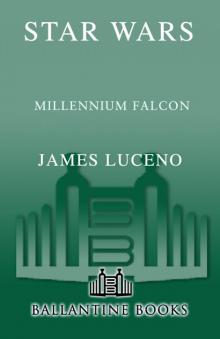 Star Wars: Millennium Falcon
Star Wars: Millennium Falcon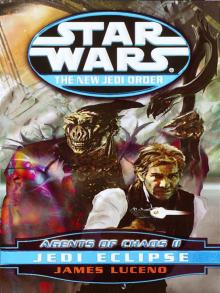 Jedi Eclipse
Jedi Eclipse Star Wars The New Jedi Order - Agents of Chaos II - Jedi Eclipse - Book 5
Star Wars The New Jedi Order - Agents of Chaos II - Jedi Eclipse - Book 5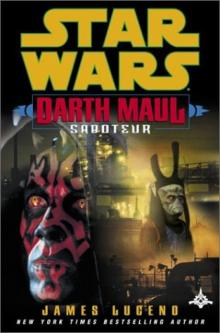 Star Wars - Darth Maul - Saboteur
Star Wars - Darth Maul - Saboteur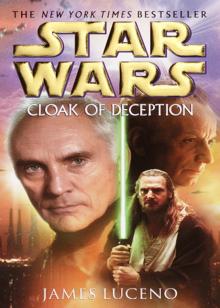 Star Wars: Cloak of Deception
Star Wars: Cloak of Deception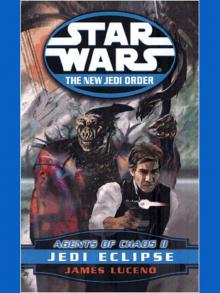 Star Wars: New Jedi Order: Agents of Chaos II: Jedi Eclipse
Star Wars: New Jedi Order: Agents of Chaos II: Jedi Eclipse End Game
End Game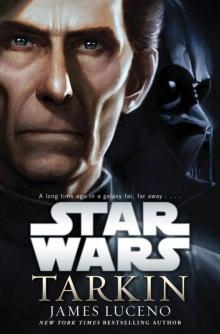 Tarkin: Star Wars
Tarkin: Star Wars Restraint
Restraint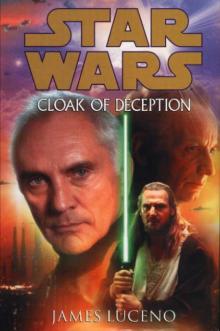 Star Wars - Cloak Of Deception
Star Wars - Cloak Of Deception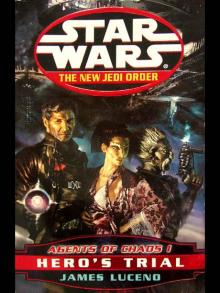 Star Wars: New Jedi Order: Agents of Chaos I: Hero's Trial
Star Wars: New Jedi Order: Agents of Chaos I: Hero's Trial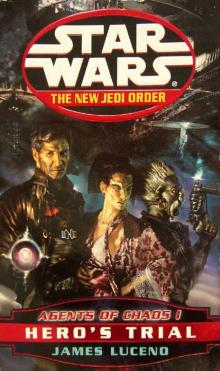 Star Wars The New Jedi Order - Hero's Trial - Book 4
Star Wars The New Jedi Order - Hero's Trial - Book 4 The Essential Novels
The Essential Novels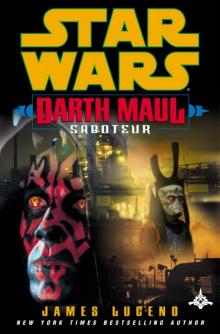 Darth Maul: Saboteur
Darth Maul: Saboteur Hero's Trial: Agents of Chaos I
Hero's Trial: Agents of Chaos I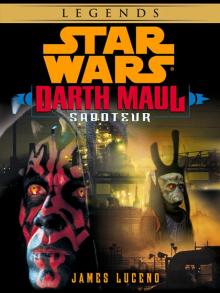 Saboteur
Saboteur The Unifying Force
The Unifying Force Tarkin
Tarkin Dark Lord : The Rise of Darth Vader
Dark Lord : The Rise of Darth Vader Catalyst
Catalyst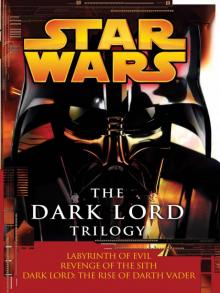 Book 0 - The Dark Lord Trilogy
Book 0 - The Dark Lord Trilogy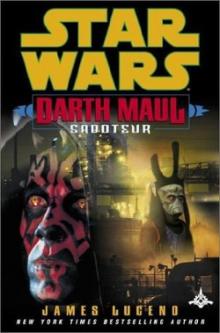 Darth Maul: Saboteur (star wars)
Darth Maul: Saboteur (star wars)